Tag der offenen Baustelle – Stadtschloss Berlin
For my book cover prototype print, I choose a small lead font called 8pt Petit Post Versalien https://www.voltapress.com/typecatalog/ After choosing the font, I proceed to set up the 8 point size letters which takes a lot of concentration and care Then, I start to …
During the bookbinding workshop I experimented with three different types of stitching and created a signature based book (chap book), a Japanese book block, and a coptic book. Here is my final and favourite result, a coptic stitch book with black pages, white …
There are two very different aspects to a visit to the Boros Collection, however, at the end of the visit it almost feels that they are converging into a new whole. One element is the obvious history of the location and venue, the other is …
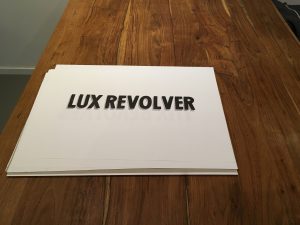
Lux Revolver Poster printed with wooden letters (and shadow)
Delving deeper into the history of letterpress and printing presses, I learn many interesting facts such as that historically movable type was in use in China and Korea for centuries before Gutenberg affected change in Europe during the 15th Century. The impressive illuminated manuscripts hand drawn by the monks up to the 14th Century, show the impressive ingenuity to use what methods and tools were available to people at their time.
This realisation leaves me feeling inspired to research further into my own contemporaries today.
After looking into Berlin practitioners and letterpress studios, I endeavour to go and visit the studio of Erik Spiekermann, the well-known German designer and typographer, called 98a at Kurfuerstenstrasse in Berlin.
Furthermore, on my list of places to visit is also the letterpress printing place named Die Lettertypen in Berlin Adlershof, who feature linotype presses as well as an original Heidelberg Cylinder printing press.
Last but not least I will plan a visit to the Buchstabenmuseum, the world’s only typography museum, under the S-Bahn station Bellevue. The museum is currently closed, yet open for special appointments, and when I contact Barbara Dechant, the owner of Buchstabenmuseum, she very kindly offers her help.
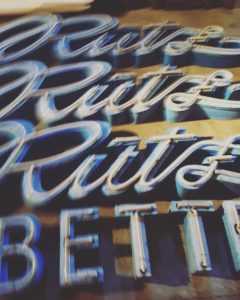
Buchstabenmuseum Berlin
Reflection of the Letterpress Workshop at Volta Press:
I look through the book of available fonts at Volta Press studio, where today’s workshop is being held. First of all, I pick out a chunky looking wooden letter with the name 12 cicero Erbar. Cicero is a measurement system that was being used in typography from the 15th Century, mostly in Continental Europe, from France to Italy.
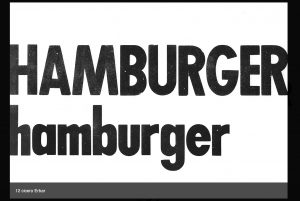
12 cicero Erbar – Copyright Volta Press
Next, I decide on the text to print, and choose the name of my company, Lux Revolver.
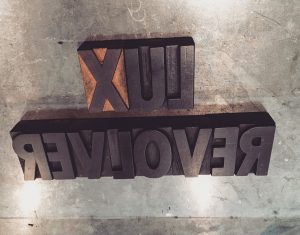
Then the type needs to be set.
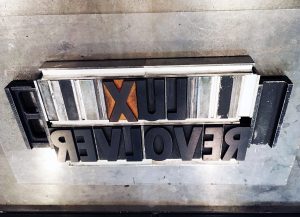
Next, it is time to lock the type into place.
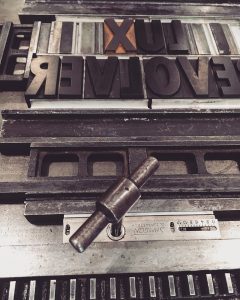
Then the linotype press needs to be set up.
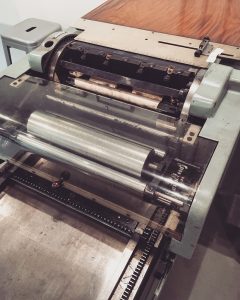
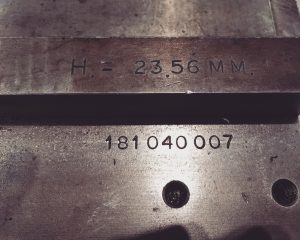
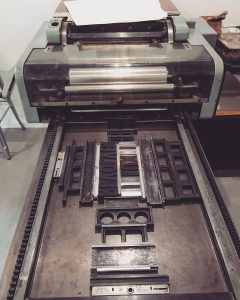
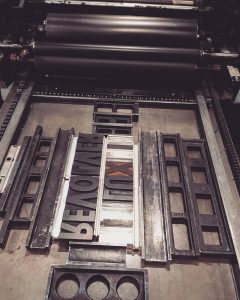
Locking the paper into place.
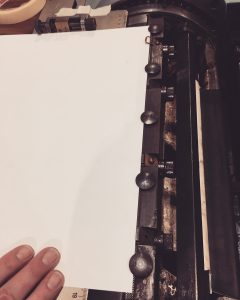
I decide that the most elegant print will be black ink on white paper.
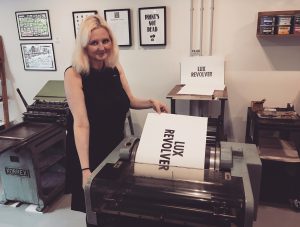
After inking up the machine, I’m ready to go!
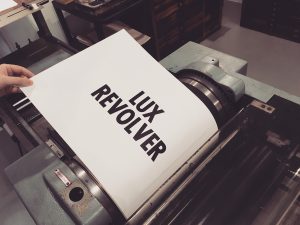
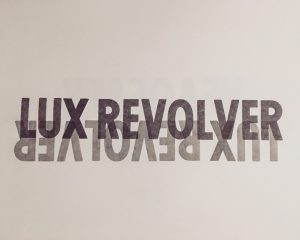
I love the experimental side to letterpress printing – ie creating a shadow, printing double or triple text, upside down, back to front etc.
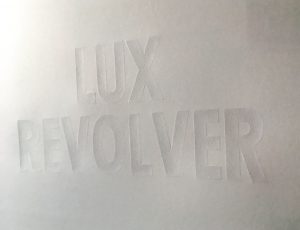
I also love the imprint it can leave on paper, and how you can play with more or less imprint on a page.
After the first print run, it’s time to change the text to run over one long line, instead of two lines:
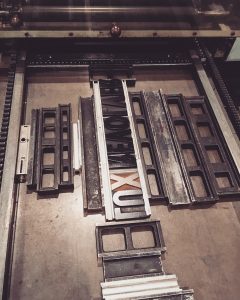
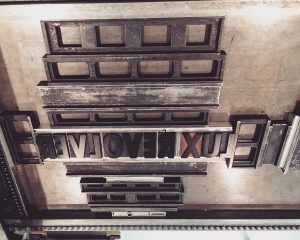
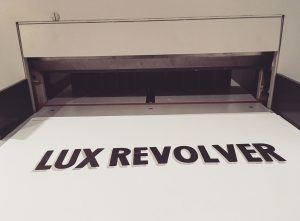
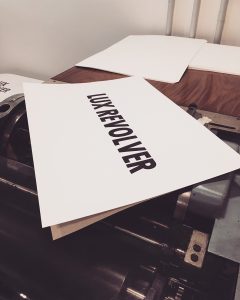
Reflecting on the day, I truly relished the ‘analog process of letterprinting’: arranging the letters, setting up the machine, deciding on the colour of the ink, mixing it, making it warm, inking the machine, choosing the paper and size, carefully adjusting the paper into the correct position, making sure the machine is in the right mode, then rolling it over the letters at not too fast and not too slow a speed – is a great experience! Focus on the task at hand, no distractions!
Exciting to walk past the Berliner Stadtbibliothek (Zentral- und Landesbibliothek Berlin) on Breite Strasse in Berlin Mitte today, in the knowledge that they are keeping a copy of my first book ‘Berlin Reflections – Antlitz Berlin’ in their archive.
The director of the Buchstabenmuseum Berlin (Typography Museum), Barbara Dechant, was so kind to let me take a look at their new premises under the S-Bahn station ‘Bellevue’. The museum is currently closed to the public, whilst negotiations for a new contract with the owner of …
Setting out to visit the Jüdischer Friedhof and Lapidarium at Schönhauser Allee, I am curious to see what lies behind
the red brick walls of the Jewish cemetery that I have so often walked by in the past.
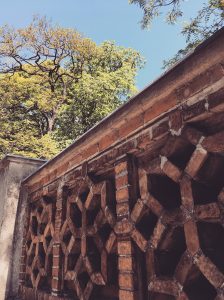
The cemetery itself is silent and peaceful, quiet with nature having taken over, trees pushing up paths from underneath,
an overgrowing and green landscape.
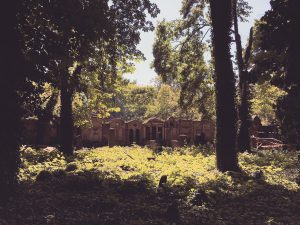
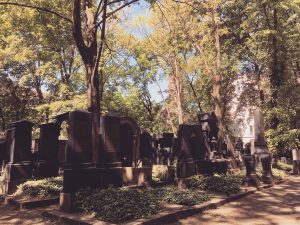
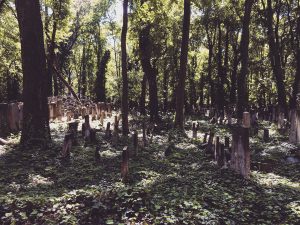
Over the years, the elements have worn down the gravestones and old crypts,
at the same time creating a field of fallen trees and headstones.
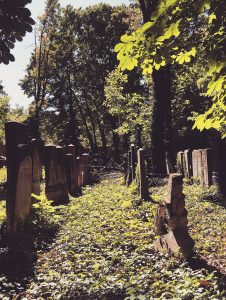
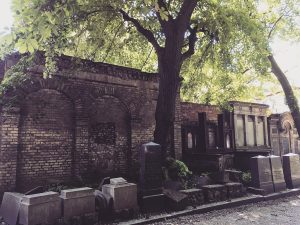
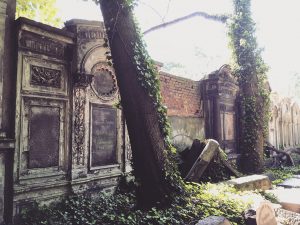
Modern apartment buildings now tower over the once tall standing crypts, around all sides of the cemetery,
with balconies looking straight onto the graves.
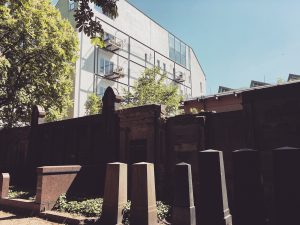
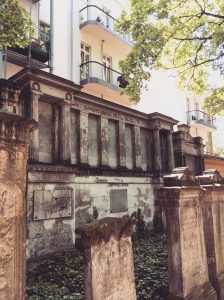
The cemetery has become nestled in between built up houses from the late 19th and early 20th centuries.
The cemetery was built from 1824 to 1827, and in use until 1880, and periodically afterwards.
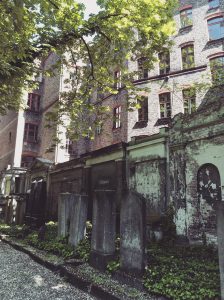
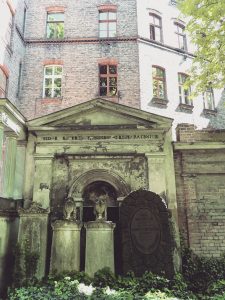
Displaced gravestones have lost their place, the space they were meant to occupy, close to the person they were meant to represent. Now these lost headstones have been placed in front of other graves and crypts, or even on top of tree trunks.
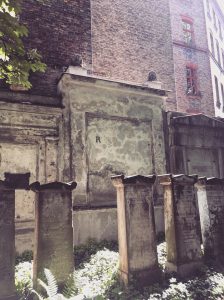
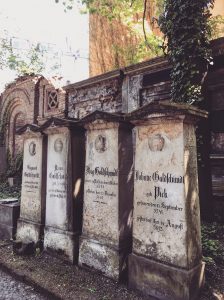
When researching the cemetery’s history I discover old black and white photographs of burials attended by the Jewish community paying their last respects, walking the last mile down the ‘Jewish walk’ to its final resting place.
The sense of community and grieve comes across in these images, one can almost feel the sombre mood a century or so ago.
A community, here the Jewish community, where its members knew each other, where a special place on the cemetery was reserved for individuals who contributed to, built and helped said community.
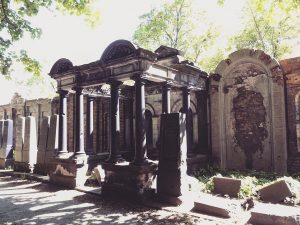
The narrative a gravestone tells from its inscription
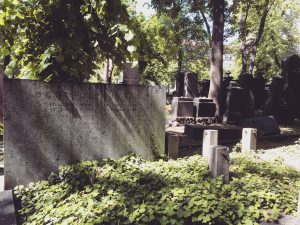
Interesting typography on the gravestones and crypts, symbols and letters, etched into stone.
A different count of the years. 5541. 5613.
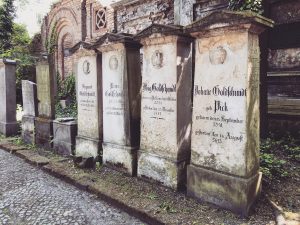
Die laute Stadt und der ruhige Friedhof (Hof des Friedens)
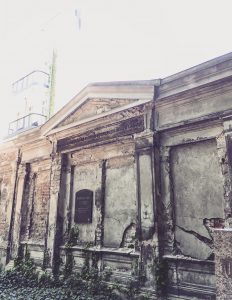
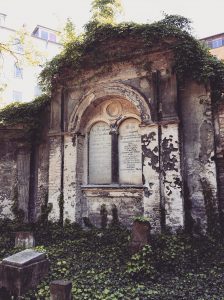
In death we are all reduced to our name and the year of our birth and death
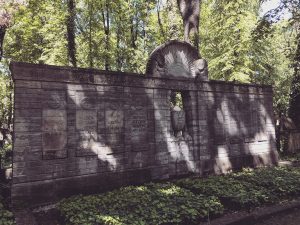
The visit leaves me feeling sad, a forgotten city, a forgotten place, within all the hectic and modern life outside of its walls.
All of a sudden I feel lost in the big city. Leaving the quiet bubble within the busy bubble of Berlin today.
Die Toten sind dort, die Lebenden hier. (The dead are there, the living here.)
https://www.wo-sie-ruhen.de/friedhoefe?stadt=1&friedhof=14
Bertolt Brecht’s grave and that of his second wife, Helene Weigel, are located on the beautiful Dorotheenstaedtischer Friedhof in Berlin Mitte. It’s a peaceful and sun-filled cemetery right in the city centre, a city that disappears right behind the graveyard walls. Next …